Victoria’s most innovative and exciting regional producers and products
Seeing the rise of “Dry July” and “Octsober”, one innovative Victorian distillery has created a sophisticated sellout range of non-alcoholic drinks that taste like the real deal. And they’re not our only regional producers achieving big things.
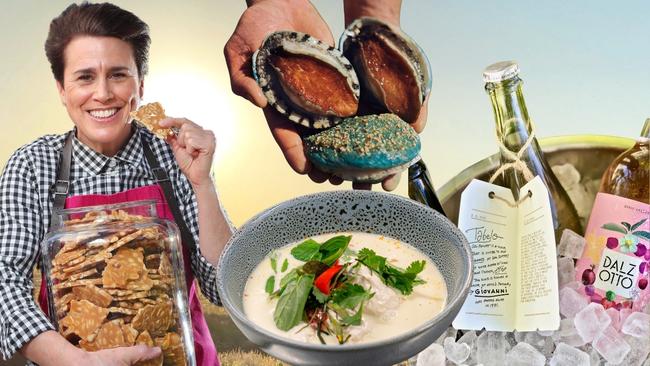
Food
Don't miss out on the headlines from Food. Followed categories will be added to My News.
It’s become one of Victoria’s favourite ways to spend a weekend. Take a road trip to visit a country farmer’s market picking up some produce and products you’d never see in a supermarket, then perhaps dropping into a cellar door to try a tipple or two poured by the winemaker themselves, heading home with a boot full of feasting to fill fridge, pantry and cellar.
Of course, COVID put a stop to that for most of this year.
While regional Victoria takes its first steps out of lockdown and towards a “new normal” this weekend, it’s still some time before Melburnians can hit the road.
But it’ll take more than a pandemic to stop our state’s industrious and innovative small producers from doing what they do best: creating unique Victorian products from the land and sea.
But without their usual means of distribution, many of our small producers have been hit hard.
That’s where Click For Vic comes in – a campaign to help connect Victorians to local producers across the state with products shipped to the door.

As Rosie Pamic from Squirrel Gully Saffron in central Victoria says, online platforms such as the Victorian Country Market – which features more than 250 stalls across regional Victoria – have supported Victorian farmers during COVID and lockdowns.
“They are brilliant initiatives for small producers around the state,” she says. “We can get our product to people across the state, from Gippsland to Mildura.”
Confectioner Greta Donaldson of Bendigo Brittle says a silver lining of a tough year is that COVID has caused consumers to think local.
“We’ve always had great support from our community, but now people really want to buy local,” she says.
From long-life smoked eggs to booze-free gins and tonic, South Gippsland scrumpy to “butter like it used to taste” here 10 of the most interesting products and innovative producers from across Victoria to discover.
FOR ALL THESE PRODUCTS AND PRODUCERS – PLUS HUNDREDS MORE – CLICK HERE
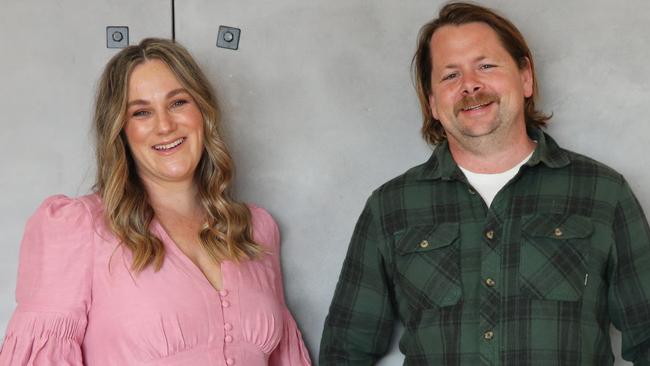
MONDAY DISTILLERY
“If you’re not drinking (alcohol), what is there apart from sugar-filled soft drinks or sparkling water? If you’re not drinking, you can feel left out,” Sam Manning says.
So she set about changing that. Seeing the rise of such movements as “Dry July” and “Octsober” and a growing group of 20-30 somethings calling themselves “sober curious”, Manning wanted to create a non-alcoholic drink that was sophisticated, tasted like the real thing and contained no sugar.
Last year Manning along with husband Haydn Farley launched their first Monday Distillery product – a classic G + T, cheekily marketed as “a G+T without the tears”.
“It’s made like a regular gin, with distilled botanicals including juniper, but without the alcohol,” Manning says.
It was quickly followed by a rum-flavoured “dark and stormy” and next week Manning will release a tequila pre-mixed drink.
With bottles as elegant as the booze-free liquid inside, Manning says she’s two products off completing the range, with a whisky and vodka slated for release in the new year.
Selling direct online from the Geelong distillery, Manning says interest in no-alcohol drinks during COVID has been unprecedented.

SMOKED EGG COMPANY
Geelong free range egg farmer Julie Kos had a smokin’ hot idea – which has been transformed into a world patent on the process of cold-smoking raw eggs.
“For me, the flavour of smoke in an egg is a match made in heaven,” she says.
Through years of trial and error, Kos perfected the method for infusing smoke into the eggs – and cold-smoking was the key.
But it’s a side effect of the cold-smoking process that’s the real game changer. The smoking kills bacteria and stops the ageing process – 18-week eggs are as fresh as the day they were laid.
“I fell on this by accident. I was just smart enough to realise there was a difference in what we were producing, that it had the long shelf life and the characteristics of the egg were very different to anything we’d seen before,” the ex-catering chef says.
Kos says early trials are also showing promising signs the process also eliminates salmonella – which would, if provable, mean eggs could return to the diets of the elderly, pregnant and young.
With such parties as the Bill Gates Foundation looking into the technology from a food security and shortage viewpoint, Kos says the revolutionary process has already been exported to the US and Netherlands.
Currently selling between three to five pallets of eggs to IGA supermarkets across Australia a week, Kos says the company has plans to soon upgrade to a larger facility at Avalon airport, with a new liquid concentrate used in food manufacturing also about to hit the market.
“This world-changing technology is coming out of Victoria, out of Geelong. The sky’s the limit.”
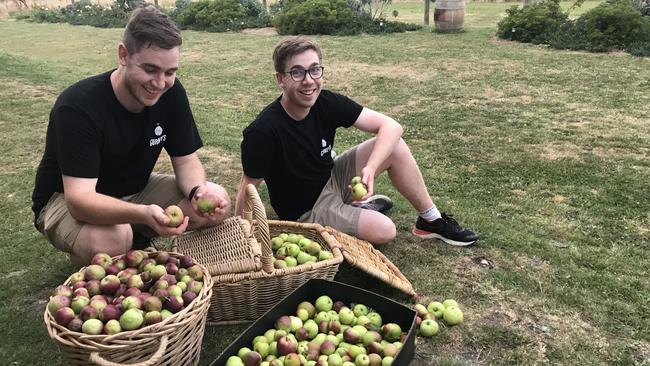
GURNEY’S CIDER
It’s home to 6000 heritage apple trees and one big family dream – to introduce traditional European-style cider to the rolling hills of South Gippsland.
The Gurnett family, who emigrated from Somerset in the UK to South Gippsland 17 years ago, started planting their cider apple orchard near Fish Creek six years ago and since 2017 have been welcoming drinkers into their Gurneys cellar door for tasting paddles of cider and simple plates of local produce.
“We’re homesick Poms you might say, we love Australia and South Gippsland – Wilsons Prom is just the best place in the world – but the only thing we couldn’t find and missed was a proper drop of cider,” James says, who works in the cidery alongside brother Tom, dad Bill and mum Lorraine.
While the orchard is currently planted with about 30 different English and French cider apple varieties, the brothers also forage for unique South Gippsland wild varieties with the hope that “in 20 or 30 years we’ll have our own unique Gippsland ciders”.
“It’s our hobby,” Tom says. “We drive around tasting wild apples and the ones that we think we’ll make really good cider we graft onto trees.”
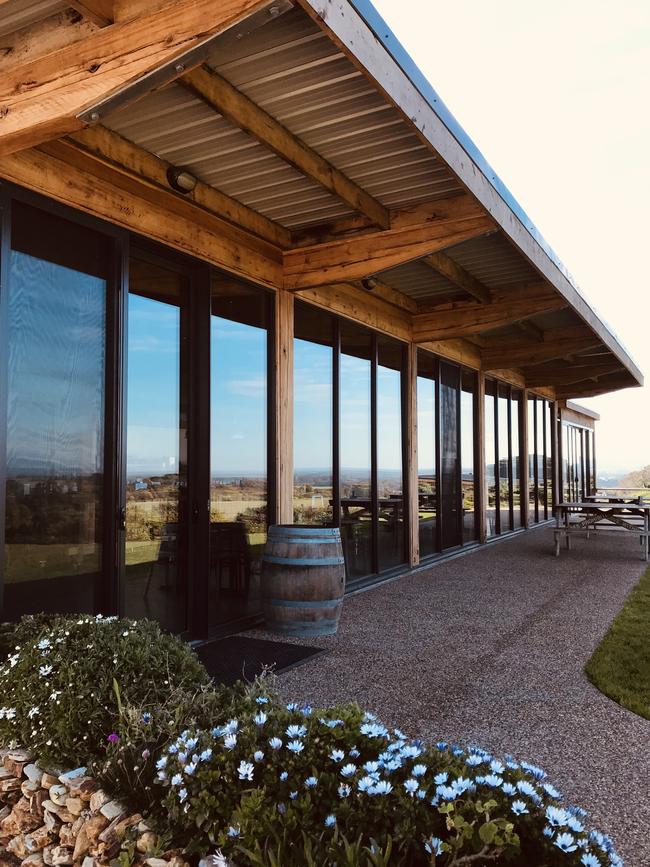
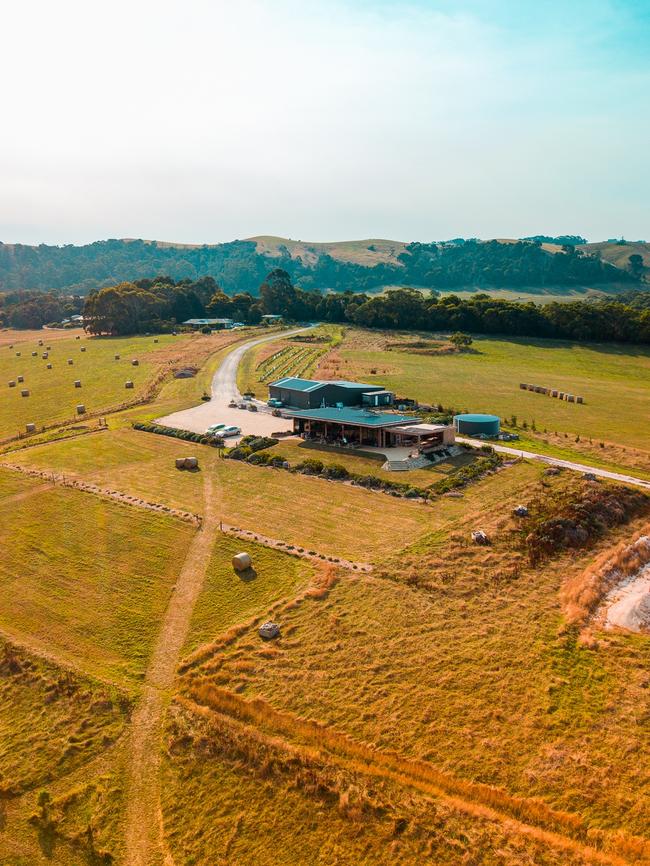
What makes a good cider apple?
“We’re after spitting apples. They are apples you think holy moly that is horrendous and you spit out … really sour, astringent really bitter,” Tom says.
James says the duo collect around three tonnes of wild apples driving around each year, which goes into their Scrumpy cider. The range also includes a wild cider, method traditional (made in the style of a French sparkling wine), a ginger and rhubarb cider and a hopped cider that “treads the line between a beer and cider”.
A recent addition is a “snakebite” made in collaboration with East Gippsland’s hip Sailors Grave brewery – a 50/50 beer and cider mix.
With the goal for the business to be ultimately CO2 neutral, the family has taken big strides to that end by salvaging and repurposing more than 300 tonnes of new steel and concrete from the Hazelwood mine just prior to its closing.
That has been given a second life as a cavernous underground cellar, where future ciders will be aged.
“We’ve inadvertently offset the CO2 creation in the underground cellar because we won’t have to run refrigeration, we can do it all naturally. It’s a win win.”
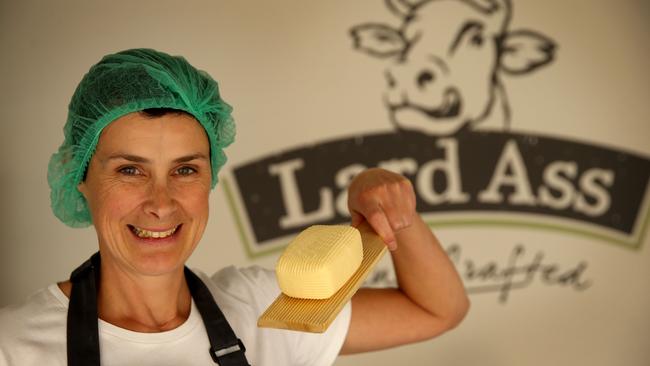
LARD ASS BUTTER
Butter is butter is butter, right? Wrong, says Monica Cavarsan.
“I grew up in the Western District. We have the best milk in the world, but we don’t have great butter to show for it. You go to Europe, you go to the UK, you go to America, everyone is offering so many different butters.”
Her solution? To make cultured butter from her Ocean Grove base.
Learning the craft during an intensive butter course at the University of Wisconsin-Madison in the US, Cavarsan says the biggest question she now gets asked at farmers markets where she sells under the Lard Ass brand is, what is cultured butter?
“People say, how is this different to butter in the supermarket? I explain we ferment it, cultures add more flavour to make it more ‘buttery’.”
Cavarsan says those of a certain generation say that her butter tastes “exactly like butter used to taste”.
One of just a couple of cultured butter makers in Victoria, Cavarsan says from her first farmers market at Ocean Grove at the start of 2018, she now produces 500 kilos of butter a week.
“When I started people didn’t know what it was, but they were happy to give something a try. Australia was ready to take on something new because all our butter tasted pretty much the same.”
Along with the original cultured butter (which tastes like a cross between butter and cheese) Cavarsan produces a range of flavoured butters, including smoked garlic, roasted fennel seed and smoked salt.
“Smoked garlic is definitely the most popular (flavoured butter). Australians just love garlic bread!”
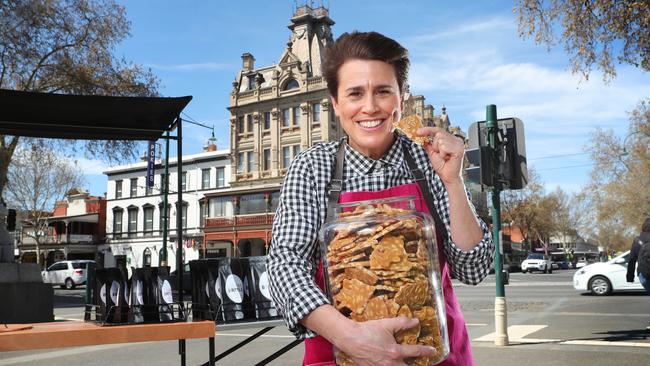
BENDIGO BRITTLE
Greta Donaldson says there is a silver lining to global pandemic – a growing respect for and realisation by consumers of where food comes from.
“Finally the penny’s dropped, it took a pandemic for people to really support local business,” she says. “We’ve always had great support from our community, but now people really want to buy local.”
For Donaldson, who moved back to her hometown from Melbourne in 2015, that means booming sales of Bendigo Brittle, the nostalgic sweet treat the former PR-maven-turned-confectioner has been selling at farmers markets in and around the historic Gold Rush city since 2016.
Tinkering with a recipe handed down from her late grandmother, Donaldson created a sweet-salty fine and crisp peanut brittle that was an instant hit with family and friends first, then a sweet toothed public.
“It’s handmade with love and care. It’s very labour intensive, very physical, but I’ll always do it this way. You can taste stuff made by machine, especially confectionary,” she says.
From that first sellout market, the range has grown to include macadamia brittle, cashew brittle and from next month an almond brittle, with Donaldson and her small team making up to 200 kilos of brittle by hand each week.
During the pandemic, Donaldson moved into a larger commercial kitchen to enable the business to keep up with growing demand and employ more local staff.
“It’s an exciting time to live and work in regional Victoria,” she says. “Bendigo is booming and I hope Bendigo Brittle can help put our town on the global food map.”

SQUIRREL GULLY SAFFRON
It’s the world’s most expensive spice, used throughout the world to add luxurious colour and fragrance to such dishes as biryani, bouillabaisse and perhaps most famously, paella.
And for the past few years, Rosie Pamic and Drew Black have been growing and delicately plucking the stigmas from thousands of Crocus sativus flowers – better known as saffron – they grow on their off-grid Squirrel Gully Farm in Dunolly in central Victoria.
Black, with a background in engineering, designed solar system at farm while Pamic, with a background spanning more than two decades cooking in restaurants around the state, “knew we wanted to do something food related with the farm”.
Saffron ticked the boxes – low energy and water usage and suited to the frosty winters and hot summers of the region and with many applications
“There’s so much you can do with saffron. There’s cocktail recipes, sweet dishes, savoury dishes, preserves, can marinate things with it. For all those reasons we decided to give saffron a go,” Pamic says.
Planting the first crop of 2000 saffron corms in 2017, the couple are about to re-sow another 2000 taking their total to more than 7000 plants, which are grown in wicking beds across their 4ha farm.
Harvest, which is between April and May, was done during lockdown this year by the duo who do everything by hand, from picking the saffron threads to printing the labels and packing the bottles.
Along with saffron that they sell to home cooks and commercial kitchens, they also sell hand-dyed saffron silk scarfs and DIY paella packs complete with pan, chorizo from Castlemaine’s Oakwood and authentic rice.
“It’s something to make a night at home for those who like to cook and support local,” Pamic says.
VISIT SQUIRREL GULLY SAFFRON HERE
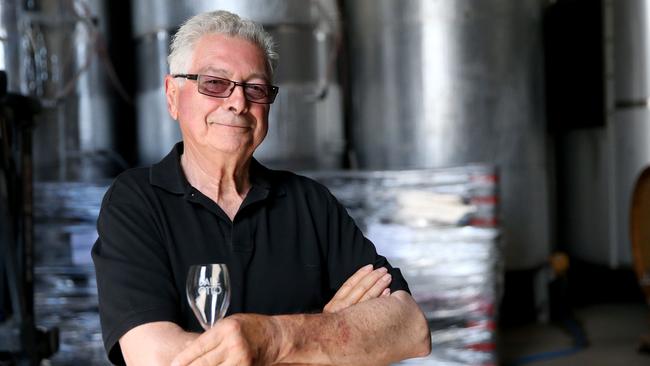
DAL ZOTTO ‘TABELO’ COL FONDO
Otto Dal Zotto had a vision – to create the wine of his birth town, Valdobbiadene in the Italian Veneto region, in his new home of the King Valley in North East Victoria.
To that end, in 1999 he planted Australia’s first prosecco vines and made his first wine in 2004. From those humble beginnings, locally made prosecco has become one of Australia’s favourite drinks, with sons Michael and Christian now producing some 60,000 dozen bottles of Dal Zotto prosecco annually.
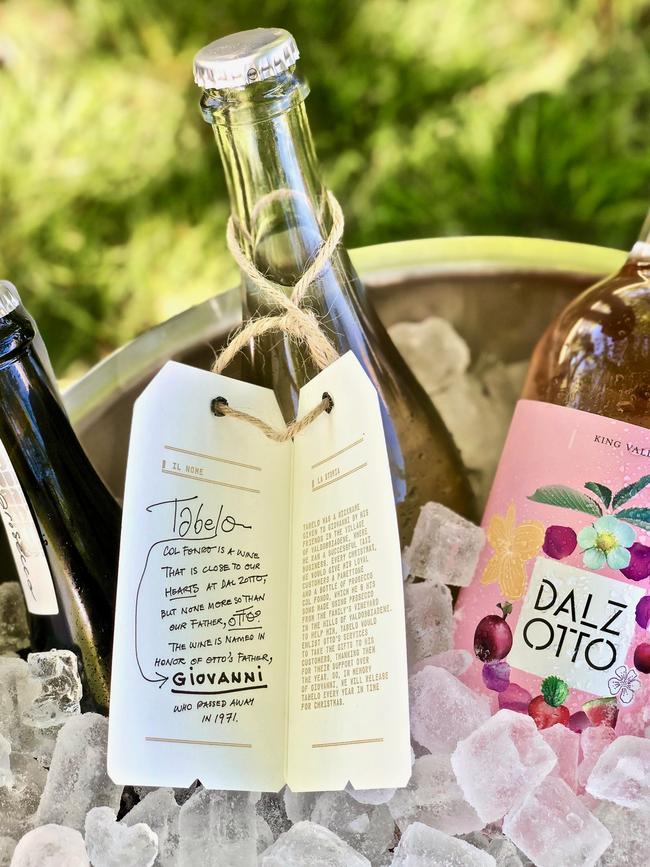
But not all prosecco is the light, bright, easy-drinking sherbet-and-apple sparkling wine most would be familiar with.
With bottle fermentation and the use of wild yeast, Christian says the ‘Tabelo’ Col Fondo “isn’t what people expect from prosecco”.
“It’s a bit on the wild side.”
Winemaker Michael says Col Fondo is the traditional way of making prosecco, which adds a portion of juice from sun-dried and pressed prosecco grapes to the wine that is then bottle fermented.
This unfiltered wine “develops a level of complexity and depth of flavour that changes people’s perception of what prosecco is”.
Named in honour of Otto’s father and Michael and Christian’s nonno, Giovanni (whose nickname was Tabelo) Christian says the wine “is a homage to what they were doing (back in Valdobbiadene)”.
“It’s a wine that’s building up a cult following,” Michael says, who releases a new vintage ‘Tabelo’ in time for Christmas each year.
VISIT DAL ZOTTO ‘TABELO’ COL FONDO HERE
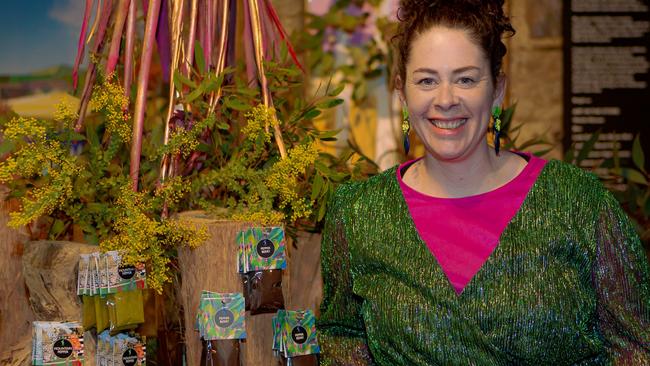
SALTBUSH KITCHEN
Wattle seed and lemon myrtle, pepperberry and strawberry gum – they’re Australia’s gift to culinary world but few of us know what to do with them, if we’ve even heard of them at all.
But Brigid Corcoran wants to change that, one flavoured salt and spice at a time.
From her experiential store in Buninyong, outside Ballarat, she shares the knowledge of Australian native ingredients she’s picked up on her “journey of discovery” over the past eight years.
“I realised how beautiful the flavours were and how versatile they were and how many beautiful native foods we have,” she says. “I thought these ingredients are things all Australians should be using, we should have them in our kitchen next to the cumin and coriander.”
As a non-indigenous person she says she questioned her involvement in native ingredients but it’s “as much about understanding where our food comes from, the history and epic story of the indigenous history of our food.”
“I feel the onus is very much on non-indigenous people to learn the history where we come from and how it can shape future. Food brings people together there’s no doubt about it, and I knew bringing people around the table was the best way to get people to experience bush food.”
Corcoran has focused on making bush food accessible for use in everyday cooking, creating a range of flavoured salts including Tasmanian pepperberry and a “campfire salt” that evokes sitting around a fire in the bush.
She is about to launch a range of spice rubs evoking the beach, the bush and an urban landscape.
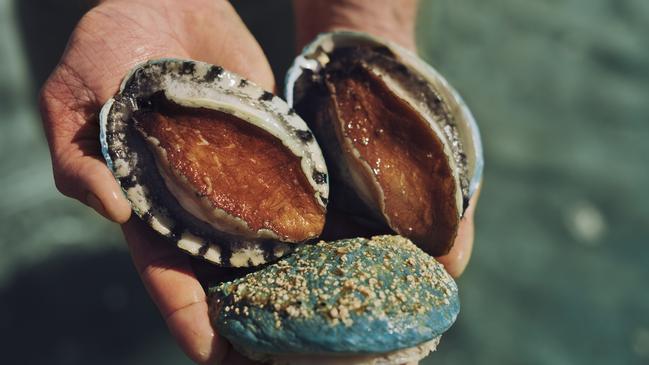
OCEAN ROAD ABALONE
Mark Gervis says Australian abalone provides a perfect touch of luxury for locked down Melburnians wanting a taste of the sea.
The general manager of Ocean Road, Victoria’s first abalone farm located in Port Fairy, says up to 70 per cent of the annual 140 tonne harvest of green tiger abalone (a hybrid of green and black lip abalone) would usually be exported – but due to COVID restrictions and closed international borders that’s dropped to next to nothing.
This stockpile allows curious local foodies a more affordable chance to try what’s known as a “kudos food” in many Asian cultures.
“Abalone is very much related to wealth in Asian culture, it’s a top-tier product like lobster, sea cucumber or shark fin,” Gervis says.
While the farm is still selling limited fresh abalone to markets in Sydney and Melbourne, home cooks can now order pre-cooked vacuum-packs that Gervis says are great to simply open and eat.
“I’m happy to eat them on their own straight from the pack as they have such a great flavour. With a glass of riesling, perfect!”
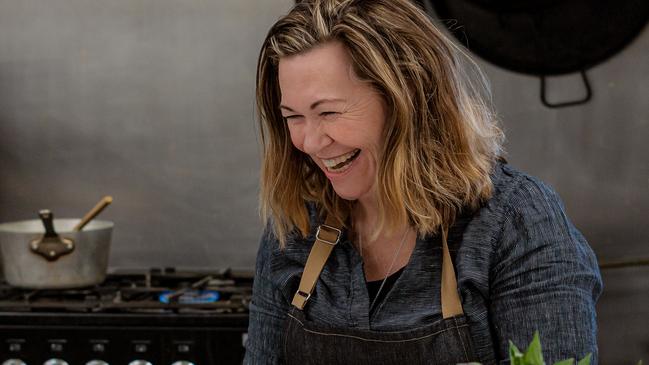
HIGH COUNTRY AT HOME
Sally Lynch ain’t afraid of no ghost – which is lucky, given she runs her catering company and cooking classes from the 150-year-old prison kitchen of the old Beechworth Goal.
“People think I’m mad, and can’t believe I work in the kitchen late at night on my own,” she says. “I’m not really a ghost person, but one night I was flicked by something on my face … that was weird. My kitchen is right in the gaol so they’ve put in a ghost monitor in there.”
While lockdown has stopped Lynch for now taking budding cooks on a physical tour of the gaol before a cooking class, she offers Victorians a chance to travel back in time – and to Thailand – with a weekly virtual cooking class called Tom Kha Gai in The Big House.
“It’s pretty cool. I take people on a virtual tour of the gaol before we start the class. A lot of people haven’t been up here to the gaol, so I around show them the cells where they’ve been hung and the exercise yard, then we do a little cooking class,” she says.
“There’s a whole lot of stories around the gaol, and the characters that were in there.”
After the tour, Lynch – who used to run food tours around south east Asia – teaches the principles of sweet-sour-hot-salty balance with her cook-along Thai coconut soup, tom kha gai.
Having grown up in the region but only returning to Beechworth four years ago, Lynch says the High Country town has heaps to offer food loving tourists – virtual and otherwise.
“It’s such a hip, happening little town. I work with the wineries (in the region) and there’s a younger generation doing amazing stuff. Everyone’s doing something interesting. It’s a really lovely place to live.”
VISIT HIGH COUNTRY AT HOME HERE
FOR ALL THESE PRODUCTS AND PRODUCERS – PLUS HUNDREDS MORE – VISIT CLICK HERE
READ MORE:
TOP RESTAURATEURS SAY MELBOURNE ‘KILLED’ BY SHUTDOWN

